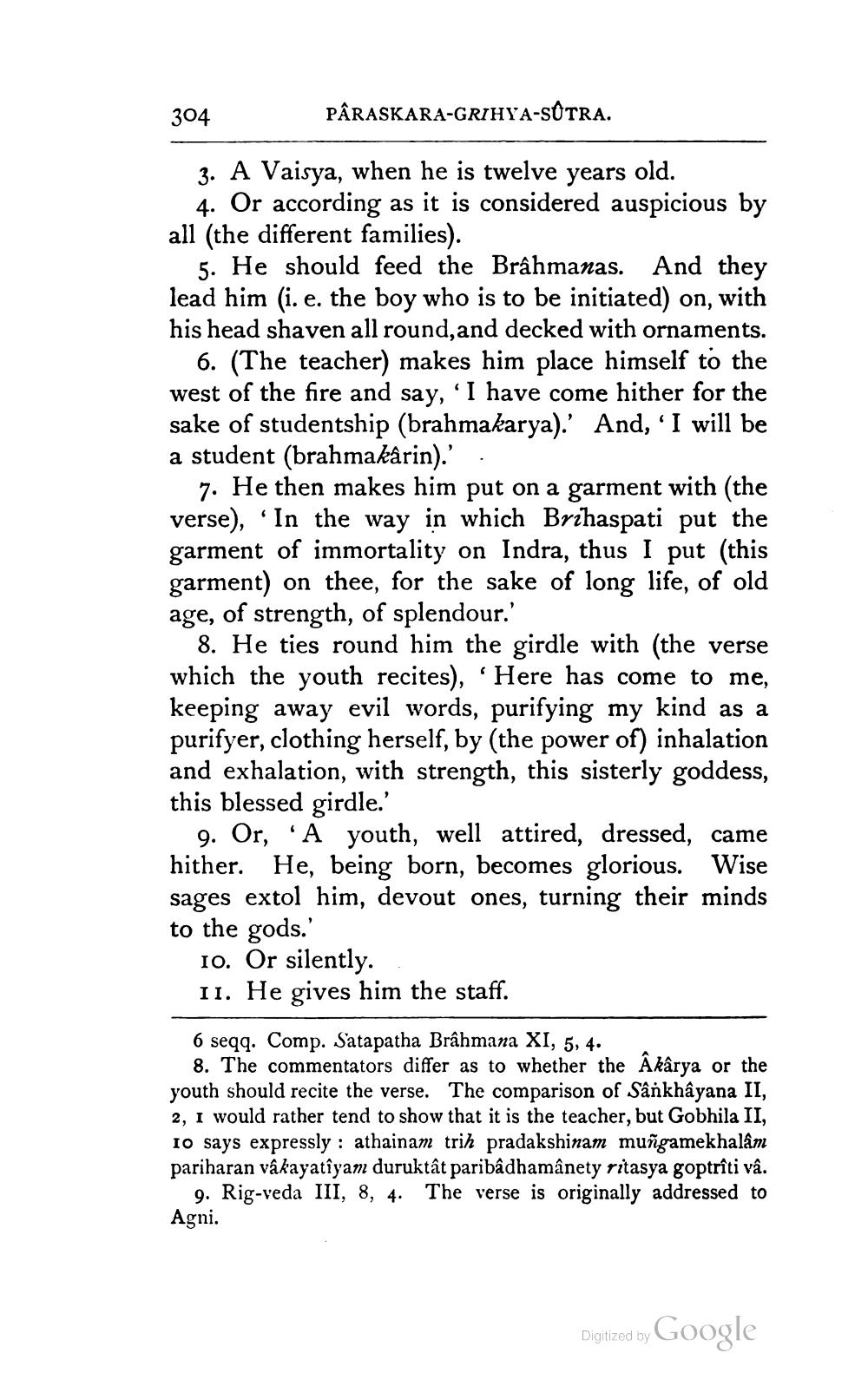________________
PÂRASKARA-GRIHYA-SUTRA.
3. A Vaisya, when he is twelve years old.
4. Or according as it is considered auspicious by all (the different families).
304
5. He should feed the Brâhmanas. And they lead him (i. e. the boy who is to be initiated) on, with his head shaven all round, and decked with ornaments.
6. (The teacher) makes him place himself to the west of the fire and say, 'I have come hither for the sake of studentship (brahmakarya).' And, 'I will be a student (brahmakârin).'
7. He then makes him put on a garment with (the verse), 'In the way in which Brihaspati put the garment of immortality on Indra, thus I put (this garment) on thee, for the sake of long life, of old age, of strength, of splendour.'
8. He ties round him the girdle with (the verse which the youth recites), 'Here has come to me, keeping away evil words, purifying my kind as a purifyer, clothing herself, by (the power of) inhalation and exhalation, with strength, this sisterly goddess, this blessed girdle.'
9. Or, 'A youth, well attired, dressed, came hither. He, being born, becomes glorious. Wise sages extol him, devout ones, turning their minds to the gods.'
10. Or silently.
11. He gives him the staff.
6 seqq. Comp. Satapatha Brâhmana XI, 5, 4.
8. The commentators differ as to whether the Âkârya or the youth should recite the verse. The comparison of Sânkhâyana II, 2, I would rather tend to show that it is the teacher, but Gobhila II, Io says expressly athainam trih pradakshinam muñgamekhalâm pariharan vâkayatîyam duruktât paribâdhamânety ritasya goptrîti vâ. 9. Rig-veda III, 8, 4. The verse is originally addressed to Agni.
Digitized by Google




